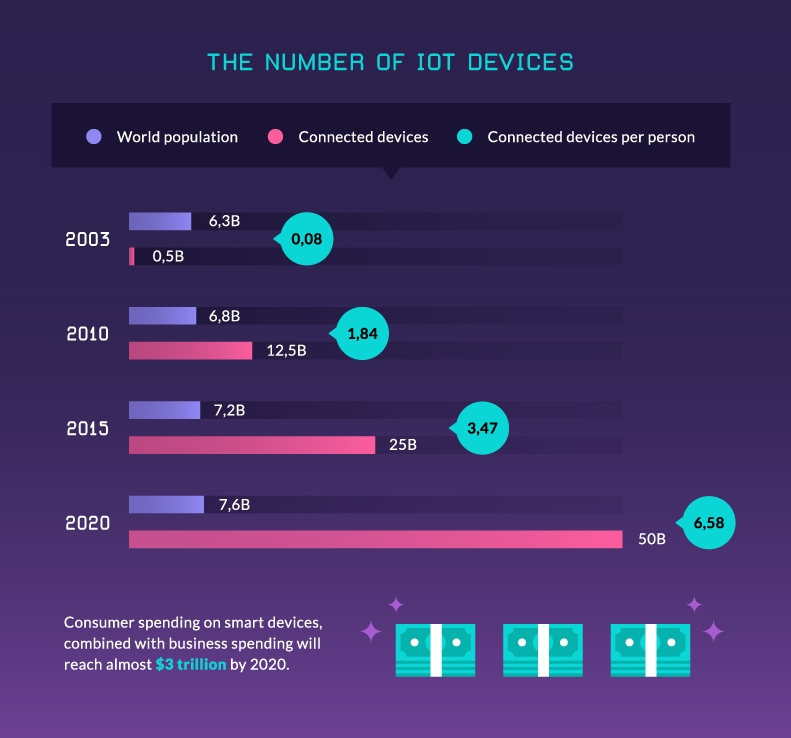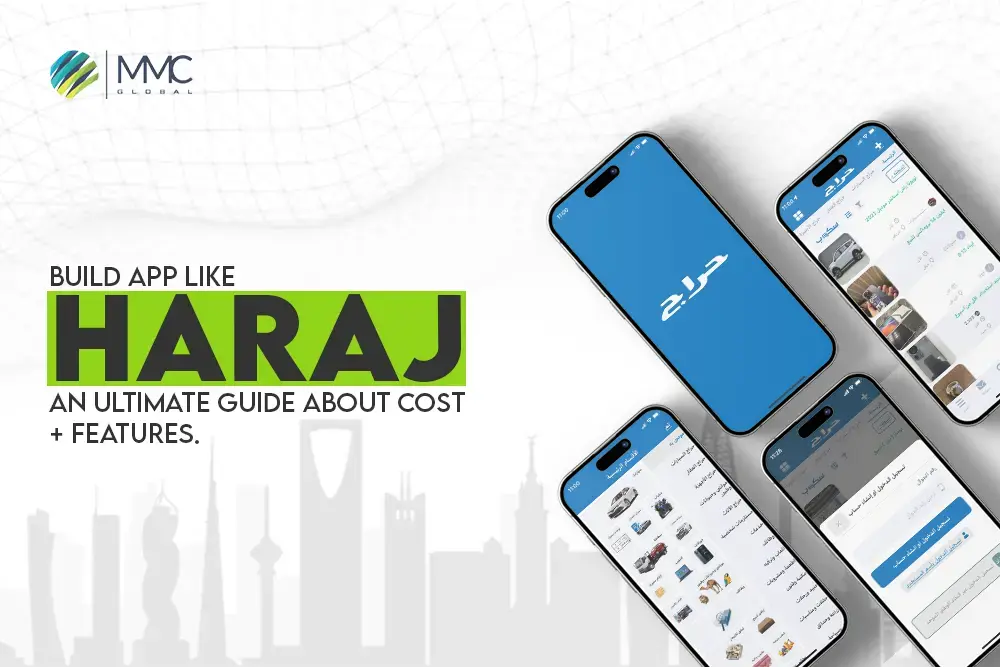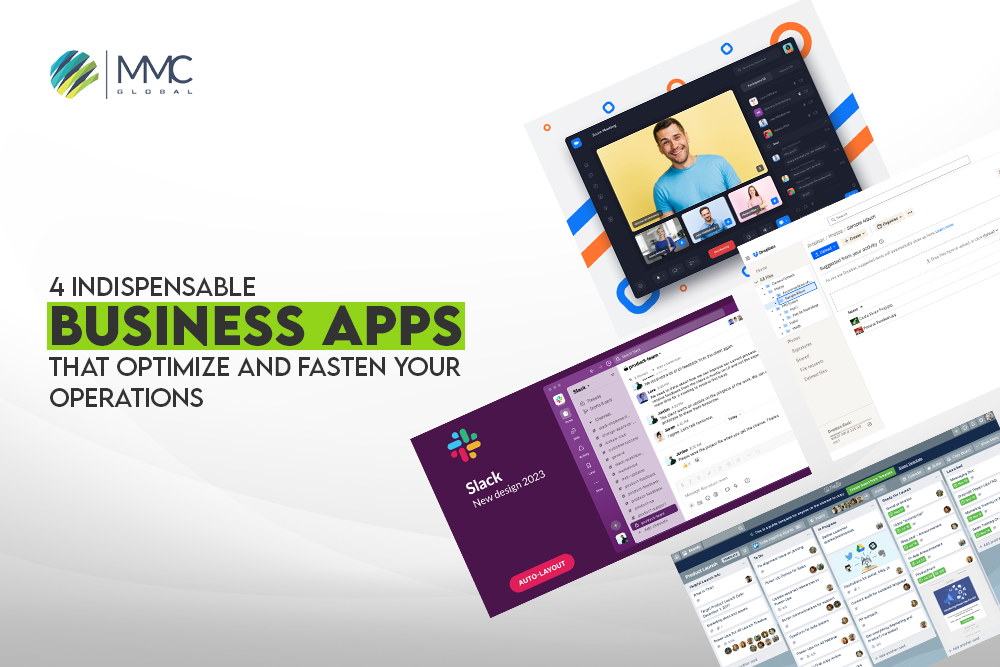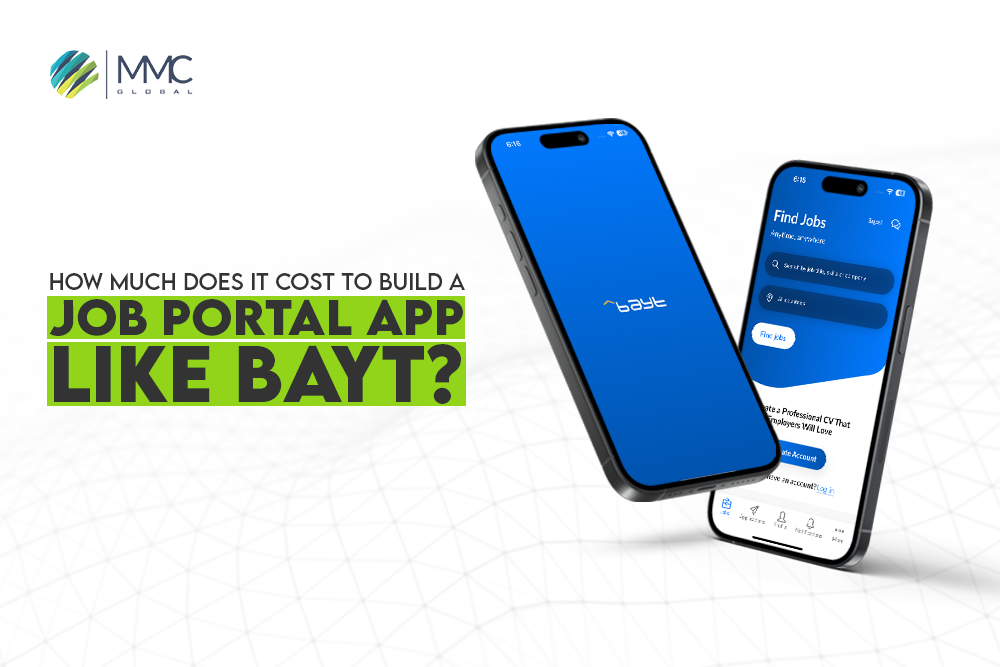Complete Guide About IoT Development And Best Practices
IoT (Internet of things) mirrors both challenges and possibilities. The revenue generated from IoT and IoT devices is going to be two times more in the coming years. It implies that firms involved in IoT development are destined to gain profit massively. Don’t make false assumptions because getting rich in a blink is not a shortcut.
Also, don’t just jump in without knowing the best practices because it could become the reason for your failure. But of course, it’s not rocket science, and you will also get good results if your team is prepared and well educated about the field. If you want to understand IoT, this is where you should be.
However, if you are opting for IoT development services for your business and searching for the best firm, MMCGBL is just what you need. Because we have more than ten years of experience in the field involving practical IoT practices. So, let’s start with understanding what IoT is.
What is IoT (Internet of Things)?
Yes, the Internet of Things is one of the next-generation things in technology. But the question is: what is it? How does it relate to other big sensations such as Artificial Intelligent and Machine Learning?
Take it as a wide variety of devices that can be connected to the internet and share data in real-time. And it involves conventional devices such as computers, laptops, and smartphones. The phrase is often used to describe hardware improved with Internet access.
It incorporates Biochips, Cardiac monitors, security cameras, industrial sensors, TVs, and several other smart devices. Any device with an IP address to share and receive data through a connected network is considered part of IoT.
The three advanced innovations (IoT, Artificial Intelligence, and Machine Learning) are interconnected and impact each other. How does it collect data? Through the smart apps connected with physical devices that Machine Learning utilizes to establish better AI.
As they are interconnected, and devices need advanced AI to do more advanced jobs, so, when AI gets better, IoT gets better too. IoT assists in making people’s lives better and even more efficient by amplifying previously dumb devices via internet connectivity. Below are some of the examples of how IoT can make your life better:
- Smart devices in your home, such as lights and thermostats, can be automated to turn off and on through internet connectivity. For instance, you can automatically turn your thermostat off in the daytime if you want to save money and time. Then turn it on as soon as you reach home through your smartphone and internet.
- Little monitors and sensors are fixed with manufacturing devices to track for malfunction and reduction in performance ability before anyone can notice it. It protects you from unseen downtime, schedules maintenance work in advance, and makes the process of manufacturing more productive.
- Health care devices influenced by IoT can update physicians on the patient’s vital organ condition. For instance, the glucose level in the body and blood pressure cuffs.
It doesn’t matter how you utilize it; it is a fact that its popularity is increasing very fast. Gartner says the number of IoT devices (8.4 billion) is more than humans. According to him, this number has risen to 20.4 billion in 2020.

IoT product development
IoT solutions have the power to completely change every element of your company, from systems and activities to clients and results. If you are trying to boost customer experience, IoT devices can be the best assistance in several different ways:
Customers will likely feel happy and more accepted when they get personalized attention followed by actions. Let’s say you just step foot into a coffee shop, and the coffee machine starts preparing your usual order at your very sight. Wouldn’t you be happier and want to come to the shop more often? Or, when your stock is running low, it places new orders on a routine basis.
Read More: Internet of Things (IoT): The ideal choice for developing a startup mobile app in 2022
The time spent on customer service is also minimized by it. For instance, when facing an issue with its engine or anything that needs repairing or change, a smart car can call a repair on its own. Moreover, IoT’s perks that even the agricultural and construction sectors are getting benefits that were generally not recognized as the most innovative.
Since IoT-incorporated tractors can provide all the details about the location, drivers would know where the seed has been sowed, and they must not take their tractor from that path because who would want to ruin all the seeds? You know what? It’s the right time to get into IoT development or avail of IoT development services since there are few IoT products. But before going further, we want to draw your attention to some critical issues.
Failure happens most often
Only 26% of businesses claimed that at least one of their IoT projects was a full hit as per the 2017 Cisco survey. Additionally, 60% of IoT development projects hit a wall within the demonstration of concept stage. If you are in need of a successful IoT product development, you must follow the IoT best practices.
Security is essential
You can see the smart light bulbs installed in most houses nowadays or if we talk about medical devices, which can be a significant proof of IoT products. IoT users can be subjected to hundreds of millions of security threats when the device is connected to the internet. The only option is to follow the IoT best practices while developing IoT products. Furthermore, you’ll have to consider GDPR and other security laws and rules about sensitive personal details.
Addressing the right problem is crucial
Several IoT developments collapse because they fail to address their current business issues or find where the problem resides. Be certain about what you are doing and plan to utilize specific KPIs to evaluate the product’s effectiveness before even starting. However, don’t forget to select a suitable technology for the job.
IoT development – Waterfall vs. Agile
There are two key frameworks for software innovation – Agile and Waterfall. Software development using a Waterfall framework requires a linear approach. Each and every phase of the development project has a set of steps that programmers need to pursue.
Whereas the Agile framework was developed in direct response to Waterfalls critics. It was suggested by the sceptics that there is an enormous amount of possibility for an issue to go unnoticed till the whole project is completed. Teams using the Agile IoT framework separated every element into the smallest controllable unit and created value gradually with time.
The Waterfall development IoT framework
The Waterfall framework for IoT product development has been used for years to build software and hardware. As per this framework, the development occurs sequentially from one stage to another. Doesn’t it appear like a Waterfall Pouring over a sharp peak? Though, there’s no chance of the project moving further if the current or the first stage is not complete and working. So, it’s unlikely you would ever go to the previous step.
The conventional Waterfall framework stages consist of:
- Gathering requirements
- Analyze and plan
- Designing
- Development
- Testing
- Deployment
The result is defined early in the Waterfall development IoT framework, and the whole procedure is mapped out from start to finish. You can acquire a more structured appearance on the edge via this project. Yet, you can easily identify the Waterfall model’s drawbacks. Or, if, in any case, you decide to broaden your project range or a major issue arises, you may have to start from scratch. One more thing, it won’t allow any changes from clients and customer feedback.
However, if we talk about testing, you can do it once your project is just done. Until relatively close to the end of the project’s life span, group members cannot be certain that they get a real, usable output. It implies that the Waterfall framework can be very dangerous to work with.
The Agile development IoT framework
According to a report, some developers produced the Agile manifesto in 2001 to protest against the Waterfall framework and its restrictions. They provided a document in which everything was mentioned and highlighted what they wanted for IoT product development. The authors specifically noted what they would enjoy having.
- People and connection above everything (tools or methods).
- The functional operating system above is an extensive document.
- Collaboration with the customers instead of feuding over the agreement.
- Accepting change over sticking to the plan.
Those were the very concepts adopted for the Agile development methodology. In the Agile approach – adaptability, collaboration, and speed with cross-functional platforms in an agile manner were prioritized as its users refer to it.
Agile divides the IoT process into short sessions or chunks called sprints, usually lasting between 1 and 4 weeks. Then the particular task is assigned to every team member throughout the sprint. Most importantly, team members discuss their daily tasks to coordinate with each other, while if any issue arises, they solve it right there and then.
However, the result is severely impacted by how the IoT product development is carried out. When we compare both, Agile is the one that accepts change and is designed to adapt. The priority in the Agile model is user testing and feedback while delivering a working product as quickly as possible.
Agile development is IoT best practices
Do you think the Waterfall methodology is ideal for developing IoT products? Definitely not! But Agile can be the best fit. Agile is recommended while creating a minimum viable product (MVP). It is the first-pass demonstration of a theory that shows your proposal is possible. It acts as a source of support for customer and user comments.
Let’s imagine you want to design and develop a car from nothing; you can design and construct parts such as the engine or structure at once using conventional development methods. But you also know that this method will take a long time to provide a usable result.
Rather, understand the real reason you are building a car; what is the purpose? To travel from one place to another, of course. Developing an MVP that could carry people from one place to another would be your first step, for example, an electric skateboard. Then you will go further by incorporating other features when creating transitional items, for example, scooters or motorbikes. Playing with real objects may seem pricey and time-consuming, but this is the fastest way to create an IoT solution.
IoT solutions involve physical items that are independent of any particular hardware. It works more like a software system as a result. Furthermore, rapid product delivery intervals would be possible once the appropriate software foundation has been set up. Below are some key points of Agile IoT development:
Limitations and Verifications
Discuss any limits you’ll confront and test your project ideas (budget, time limit, team members, etc.).
Strategy for product innovation
Create a strategy from scratch. The final plan should include both short-term requirements as well as long-term foresight for the IoT solution.
Imitation
It would be best if you created a crude hardware prototype for your hardware that really can accurately mimic the functionality of your desired final product. Consider an IoT development board with connectors. When picking your development board, at the same time, your CPU or MCU that will be employed in your finished product must be selected. Be certain that you can migrate your firmware to several chipsets if not possible.
However, let’s talk about web or mobile software. It is required to build critical components around device licensing, identification, firmware upgrades, and the fundamental message transfer between the website backend and device. Within their software assessment tools, your software staff must “imitate” the engagements with the device. Thanks to this, they can continue without needing a physical gadget.
Complete Prototype
This stage aims to link your prototype to the internet fully. IoT firmware vulnerability upgrades must be able to be sent to and accepted from your devices. At this point, your firmware and software ought to be prepared for launch, though they most likely aren’t feature-complete.
Run the micro-fracturing
Develop bespoke made circuit boards and 3D-printed mechanical parts in this phase. You can give some to your software group’s least hardware-savvy members to allow hardware tests. Don’t let the technology team give up the notion of accurate hardware imitation for mechanized testing. You can proceed once you feel secure handing over the device to the beta testing team.
Initial Manufacturing Run
You can give away 100 gadgets from this early manufacturing run to a trial team of users. You ought to get comments at this step so you can iteratively refine your work. You can interrupt the software crew at this point if you have to make hardware adjustments. As a substitute, you may request that they keep developing more complex (non-MVP) software components.
True manufacturing run
At least 1,000 gadgets will be produced at this round. The technical team must have finished any specialized setup or validation software that the manufacturers required. You could get opinions on the user’s initial acquisition and education process with a robust set of early customers.
Run for Go-to-Market manufacturing
Your first IoT product development release is now complete! You may take advantage of scale savings more when you produce a larger amount of products. Your hardware has achieved the ideal equilibrium between price and performance, and your software is impenetrable.
As your business makes money from the revenues of your initial batch of gadgets, you can start creating fresh gear. These items will connect quickly to your IoT network.
Internet of Things FAQs:
Question: What exactly is a cloud IoT platform?
Answer: To take advantage of the information gathered from field-based gadgets and other information sources, an IoT network gives users access to five essential components: visualization tools, data protection elements, a workflow processor, and a unique UI. Platforms that operate in the cloud can indeed be accessible from any location.
Question: What does it mean by IoT Application Enablement Platform?
Answer: An IoT platform that offers programmers the ability to swiftly create a functional IoT application and UI in minimal code is an IoT application enablement platform. By reducing technological barriers, AEPs enable businesses to scale more quickly and realize the benefits of IoT spending more quickly.
Question: Do you utilize the Agile approach as an IoT development company?
Answer: Yes, here in MMCGBL, as an IoT development company, we practice the Agile approach in everything, not only IoT development. Because we know how important it is to connect with customers and make alterations as they want.
Bottom line
There’s a lot in IoT development! If you’re ready to get your feets wet, this field can offer you a lot. But you also consider that IoT product development often fails, so selecting the best partner and carrying out IoT best practices is important. Without this, you can’t last long.
However, if you decide to get into the sea of developing IoT products, we have a skilled team that can assist you and takes you to success. It will be easier for you to handle everything by partnering with professionals in a reputable IoT development company.



